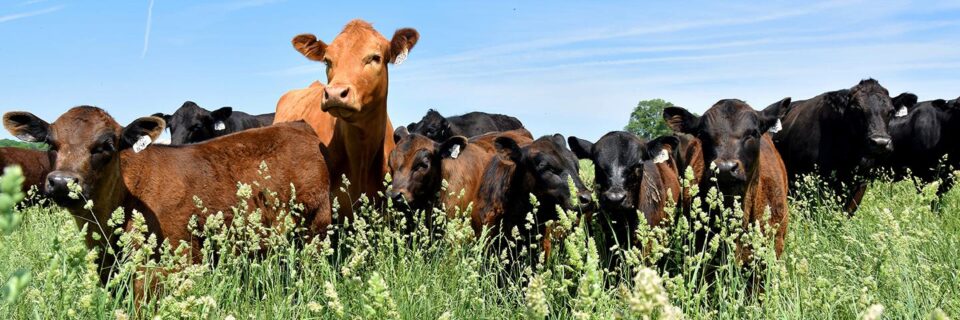Healthy soil is not just the foundation of vibrant plant life—it’s also a key ally for cattle producers. Through a variety of ecological services, healthy soil supports livestock indirectly by improving plant mineral concentrations, enhancing soil carbon sequestration, boosting water storage, and preventing soil erosion.
When livestock thrive in such a rich environment, their productivity benefits too.
More Than Just Soil: The Complex Web of Cattle Health
While soil health plays a crucial role in cattle farming, it’s just one piece of the puzzle. Management practices, nutrition, water quality, and factors like diseases also influence the health and productivity of cattle. But according to Dr. Jan Myburgh, a senior lecturer at the University of Pretoria, integrating healthy soil practices with nature can significantly enhance cattle farming profitability.
“Myburgh explains that while crop farmers have long understood the importance of well-balanced soil, it’s now time for cattle breeders to see the same value. By comparing income from cattle on well-balanced vs. depleted soils, we can make more informed decisions.”
The Five Principles of Healthy Soil
For those looking to improve soil health, Myburgh outlines five key principles essential for dynamic soil biology:
- Minimize soil disturbance
- Maximize plant diversity
- Keep the soil covered
- Maintain living roots
- Integrate livestock
While these principles are often applied in crop farming, Myburgh points out that they can also significantly benefit natural veld, plants, and the soil underneath.
Physical, Chemical, and Biological Soil Health
Soil properties are typically categorized into physical, chemical, and biological classes. Physical and chemical aspects are straightforward to evaluate, but the biological properties of soil, although complex, have the greatest potential to enhance soil function and increase plant productivity.
When soil is biologically unhealthy, the whole environment suffers—including plants, animals, and water quality. If soil isn’t performing its basic functions, it will affect the productivity of everything relying on it.
Soil Function: A Crucial Link for Cattle Farming
In livestock farming, grass is the primary food source for cattle, but healthy soil is what sustains the grass. Healthy soil ensures optimal productivity, preserves biodiversity, supports nutrient and water cycling, and maintains structural support for plants.
Myburgh emphasizes: “Healthy soils are alive—they promote plant growth and allow ecosystems to thrive. When soil functions properly, it plays a vital role in carbon sequestration, regulating water flow, and controlling harmful plants.”
The Complex World Beneath the Surface
Soil is home to a complex web of organisms, from microorganisms to invertebrates like earthworms and termites. These soil organisms are critical for breaking down organic matter, enriching the soil with nutrients, and making them available to plants. Without these natural processes, organic material would pile up, and plants would struggle to access essential nutrients.
Soil organisms also play a role in maintaining soil structure by preventing erosion, supporting water retention, and reducing runoff. In essence, they are the unsung heroes of farming ecosystems.
Benefits for Cattle Producers
For cattle farmers, healthy soil means increased grazing potential per hectare, which translates into more beef production. Additionally, it boosts the bioavailability of essential minerals in plants, improving livestock health and productivity.
“Healthy soil enhances plant quality, water retention, biodiversity, and carbon sequestration—all factors that directly impact grazing quality and livestock health,” says Myburgh.
Soil Biology and Ruminant Health
Interestingly, the health of cattle is deeply intertwined with the health of their environment, especially soil. The rumen—the stomach compartment where microorganisms break down food—functions similarly to soil in its role. Just as soil biology is essential for soil health, ruminal microorganisms are vital for optimal digestion in cattle.
A deficiency in either can have serious consequences: “If soil microorganisms are absent or inactive, the soil is effectively ‘dead’—just like livestock without healthy ruminal microflora,” explains Myburgh.
A Holistic Approach to Farm Health
While livestock health is often closely monitored, the health of soil, plants, and animals should not be treated as separate entities. A more holistic approach that integrates all these aspects will likely lead to greater productivity, profitability, and sustainability in cattle farming.
In conclusion, healthy soils are essential for increased grazing, higher beef yields, and overall farm success. Investing in the biology of the soil not only sustains the land but also secures a prosperous future for cattle producers.



